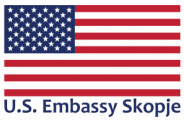The fires in the Arctic Circle, which spread in late July and early August 2019, are a major environmental disaster. Although fires in this part of the world occur regularly in summer, this time due to a variety of circumstances, primarily due to the dry weather and strong winds, the fire has spread over a vast area of over 25,000 square kilometers and has caused damage to about 60,000 square kilometers (until August 4th). These areas are not densely populated, but still a significant number of people were affected by the fire. Foreign statesmen and organizations have offered logistical and humanitarian aid, and several petitions have been launched to declare a state of emergency and to collect humanitarian aid.
The fires in Siberia, Russia, have been in the focus of these events and one of the world’s major news stories in the recent period as another alarming event in the context of climate change and the dangers lurking from them. These tragic events, as it was expected, had a strong echo on the social networks as well, and besides the signing of the petitions and the calls for help, there was a great deal of information, photos and videos of these unfortunate events that couldn’t leave anyone indifferent. The events were also shared under numerous hashtags #savesiberianforest #forestisonfire #savesiberia #disaster #saveSiberianForestFromFire
#горитлес #спасисибирьотпожара #спасилесасибири #сибиртгорит etc.).
The watchful eye of an experienced observer was able to identify photoshopped photographs in the online content for this disaster, as well as other edited content that increased the spectacle of these events.
What could be the motive for such posts that lack factual support? Is the additional editing of these tragic events justified? What are the techniques used for these reports and processed information? These are just some of the basic questions that arise not only in terms of ethical analysis, but also within consideration of our media and visual literacy.
There is no doubt that we live in a time where visual information is the most powerful one. “A picture is worth a thousand words,” says a folk wisdom that captures the power of visual information. They have a stronger perceptual effect, are more easily imprinted in our consciousness, are longer remembered and have a longer lasting cognitive and emotional effect. What our eyes see, we accept as an immediate fact. The persuasiveness of visual information is really strong.
In the processed photo and video material from the Siberian fires some subtle details can be identified, as well as a high degree of expertise and the skills of the persons who made the preparations to make them convincing (through skillful overlaying of elements and details, color matching, brightness, shapes, the background, the shades of the parts of the photos, etc.). The coordination and making of these information viral can also help us identify who created this content and for what purpose.
The persuasiveness of visual information is deeply connected to the way how our perception functions. When we look at a photograph of a wolf and when we see a real wolf in front of us, the same centers are activated in our brains, which can then trigger different hormonal, reflex and physiological responses. This means that only with experience and conscious effort we can learn to control these perceptual-physiological mechanisms triggered by visual information.
That is why we have to be very cautious when dealing with visual content manipulations, even when they have no direct malicious intent or such purpose. When many people are presented with a “photoshopped” photograph or a video montage, besides its visual credibility and “obviousness” as a factor of persuasion of such disinformation, the large number of people who believe and spread such disinformation becomes important factor for accepting these information as real. Swiftly, when everyone talks about something and believes in something, they share, discuss, give opinions, comment, criticize so these information become far more realistic in our consciousness. Where there is smoke, there must be fire, right?
Reassuring someone who has formed an attitude based on false visual information is one of the most difficult tasks in dealing with disinformation. Any kind of manipulation with photos, videos, animations and other visual content, whatever the motive, even if they were both entertaining and well-intentioned, must be noted. By noting that the content is visually processed, the risk of someone misusing and consciously manipulating it is reduced. In the case of the processed Siberian photos, many individuals, activists, humanitarians have been misled, and de facto abused, to share and make viral this content, thereby undermining their professional reputation and credibility.
Besides the ethical issues, it should be noted that such manipulation often may have other hidden motives. It is sometimes used for defocusing from another topic for ideological, political or economic interests. These photos appeared two weeks after the start of the wildfires at a time when criticism from experts has intensified over the government’s delayed response, which may be one of the smoldering motives for their publication, or potentially related to the political turmoil and protests by the Russian opposition that took place in the same period.
Occurrences and publications of this type can often be abused in order to polarize and amplify existing conflicts. In this sense, the publication of reworked visual content could be primarily intended to cause tensions to rise, forming a critical mass that will be opposed by another group that does not believe in such content. By doing so, the ultimate goal is to amplify a particular conflict, and not necessarily to convince everyone that these materials are true. They are just a trigger for a new cycle of a certain conflict, be it verbal or polemical. The question who needs escalation of the conflict (let’s say between the West and Russia), needs to be carefully and responsibly assessed in a given socio-political context.
Closely related to the recycling of certain conflicts is the gradual “irrationalization of the public debate”, that is, the intensifying of emotions, at the expense of rationality and facts about a certain issue and a party involved in it. When a particular event is presented even more tragic, the negative communication intensifies, the situation gets polarized and tension is raised, so the opportunities for irrational and emotional arguing, squabbling, insults and intolerance increase. This is a particularly useful tactic for someone who has an argument deficit and is commonly referred to as a “dragging through the mud – technique”.
Finally, an organized disinformation may be aimed at creating conditions and facilitating a particular political plan. So, for example, the planned mass-sharing of tragic scenes can create emotional conditions for a particular political change or decision.
Whatever the intentions of the processing of visual contents, even if it is a demonstration of how much the public can be manipulated, it is crucial to remain cautious and continually improve one’s own ability to recognize media manipulations and understand the techniques used for that.
Reporting based on manipulative photos and videos can be especially harmful. The accuracy of visual information is one of the key components of ethical journalism. The key 3 rules of the photo journalism code of ethics are as follows:
Be accurate and clear when presenting events and persons (through photos and videos)
Don’t succumb to manipulations of processed photos and staged events
Be precise and give context when posting a photo. Avoid stereotypes of individuals and groups. Recognize and avoid personal bias in your work.
René Magritte, a Belgian painter and artist, first presented his painting in 1928 entitled “The Betrayal of the Images” (La Trahison des images). On it you can see a painting of a pipe with a text under it that reads “This is not a pipe!” Curious visitors to the exhibition asked the author, what do you mean by the title that this is not a pipe, when obviously the picture has a pipe? Magritte responded briefly, if this is a pipe, then try putting tobacco in it and smoke the pipe. His simple and very important message is that we must always distinguish between reality and its “images”. Images of reality today are presented in a wide variety of visually compelling forms, from art creations, media records, photos, to deep-fake videos, and many others. That is why both this distinction and our awareness of it are far more important than that of Magritte’s time.
Sead Dzigal,
August 4, 2019.


